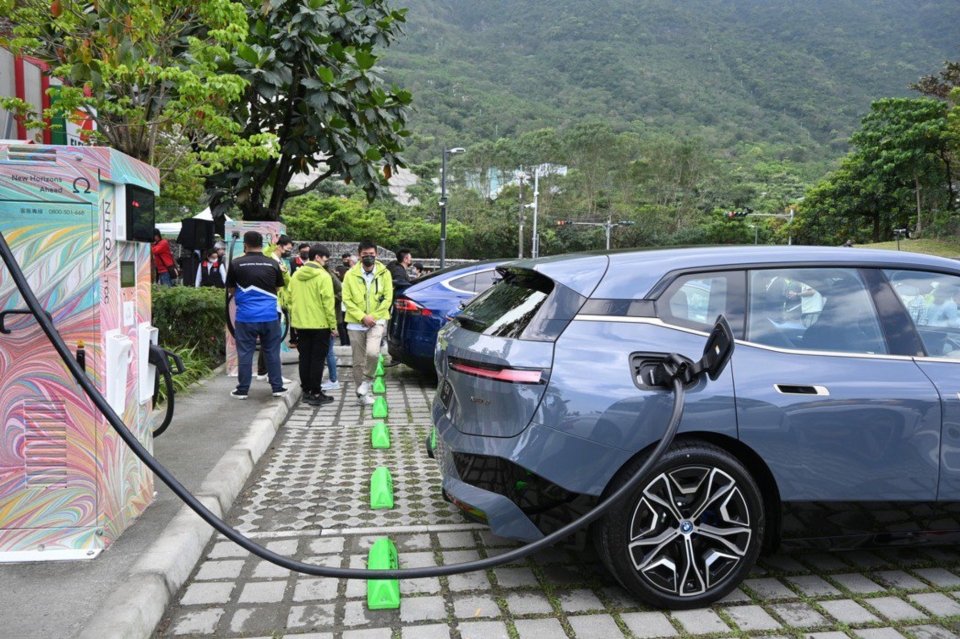EVs introduce huge increase of electricity in next decade: Is Taipower ready?
2022/07/05 | By EDNThe era of electric vehicles has arrived; according to the 2050 net-zero emission road map of the National Development Council, 30% of newly sold vehicles will be EV in 2030, and the proportion will increase to 60% in 2035. In 2040, 100% of newly sold cars will be electric vehicles. In the next 20 years, the policy will strongly promote electric vehicles on the road. However, the biggest concerns among current car owners are whether the existing infrastructure is capable of handling such an increase in EV car owners and power consumption.
In 2021, more than 7,000 pure EVs were on the road in Taiwan. At present, Taiwan's largest EV charging pile search app, with over 10,000 membership, ChargeSmith reported that as of March this year, there were more than 1,300 charging stations in Taiwan, with a total of nearly 4,000 fast and slow charging stations.
At present, there are two types of charging for electric vehicles. One is slow charging, that is, AC charging, also known as "destination-based charging," such as homes, hotels, restaurants, etc. Since time is relatively abundant, slow charging can be set to meet daily charging needs. The second is fast charging, that is, direct current charging, also known as "charging supply on the way," such as expressway service areas, parking lots or department stores, etc., to provide enough power to supplement the subsequent trips during the short stop and rest time.
The ratio of electric vehicles to charging piles is about 10:1. Chen Qing-you, CEO of ChargeSmith app, analyzed that currently, the ratio of electric vehicles to charging piles is about 10 to 1 in countries where electric vehicles are not very dense. By then, there will be more than 400,000 electric vehicles in Taiwan, "10 to 1, there will be more than 40,000 charging piles, and now there are only more than 3,000 charging piles in Taiwan, which means that the number of charging piles must grow about 15 times in eight years. It's a big challenge."
Even in EU countries that will phase out all fuel vehicles by 2035, as the number of electric vehicles increases, building sufficient charging stations will be a difficult test.
At the Taiwan-EU Electric Vehicle Forum held a few days ago, Yong Qing-long, the acting director of the European Economic and Trade Office, said that in 2030, the entire EU will need 6 million charging piles, and the average car owner should be able to find a charging station every 60 kilometers. It is planned to invest 750 billion euros in electric vehicle charging facilities.
Experts from the European Automobile Manufacturers Association (ACEA) also reminded that the development of electric vehicles can only be driven by charging facilities, and it must be ensured that the rapid growth of the number of electric vehicles and the construction of charging devices cannot be decoupled.
Although Minister of Communications Wang Cai emphasized at the forum that the Ministry of Communications will take the lead in building charging piles, the ratio of electric vehicles to slow-charging charging piles are planned to reach 10:1 by 2025, and 6,000 slow-charging charging stations are scheduled to be built. The recommended ratio of cars and fast charging piles is around 80:1, and 500 fast-charging stations will be built.
However, due to the large demand for EVs, Taipower estimates that the average annual electricity consumption of EVs will be about 120 million kWh in 2020, and the electricity consumption will increase to 2.39 billion kWh in 2030, an increase of about 20 times. Whether Taiwan's electricity supply can handle the significant influx of demand is the crucial talking point in mass-building the charging stations.
Take the Netherlands, for example, where electric vehicles and charging stations are growing the fastest. Now one in every five cars is an electric vehicle. There are 85,000 charging stations, whether public or private, and one-third of all charging stations in Europe. This is because 25% of households have installed solar power generation, which can generate electricity independently, and only enough electricity can support the smooth running of electric vehicles.
"Taiwan's situation is how there is not enough electricity for everyday use and industrial use. If electric vehicles are added, and smart meters and smart grids are not supported, can Taipower's electricity remain stable?" Once in the United States Wu Ju-rui, an automotive columnist working for KleenSpeed Electric Vehicle Systems in Silicon Valley, said that he when was studying in the United States more than ten years ago, and the power supplier "Pacific Gas Electric Company (PG&E)" in the Bay Area of San Francisco Bay Area had been an active proponent in introducing smart meters to more households. If households install smart meters, the electricity consumption can be returned in real-time, and the electricity demand can be more accurately grasped to complete the smart grid.
He said bluntly, "Are Taiwan's smart meters and smart grid established within communities? Is Taiwan ready for the electricity required by electric vehicles?"
Chen Qingyou also believes that the power supply in Taiwan is very limited. According to the current power design in Taiwan, it may not be able to provide fully in the future.


